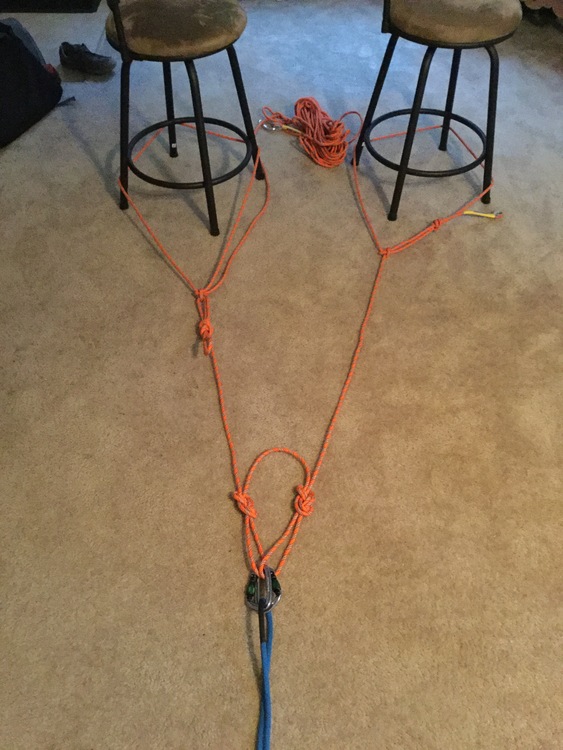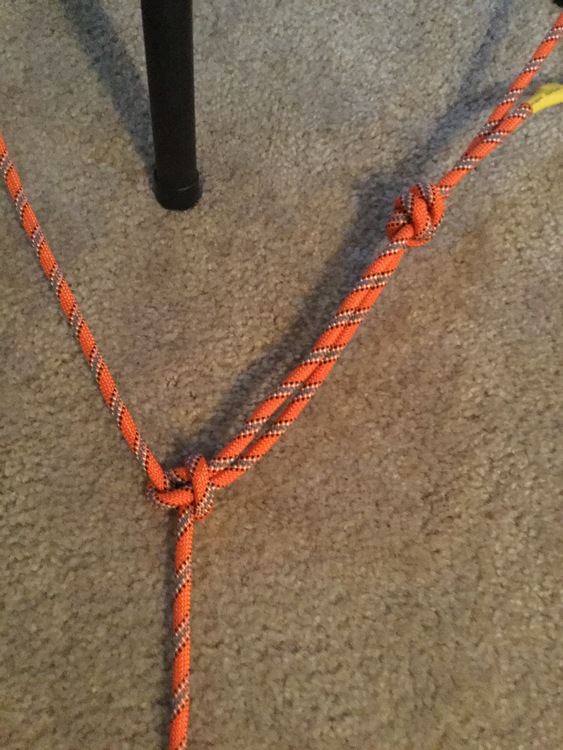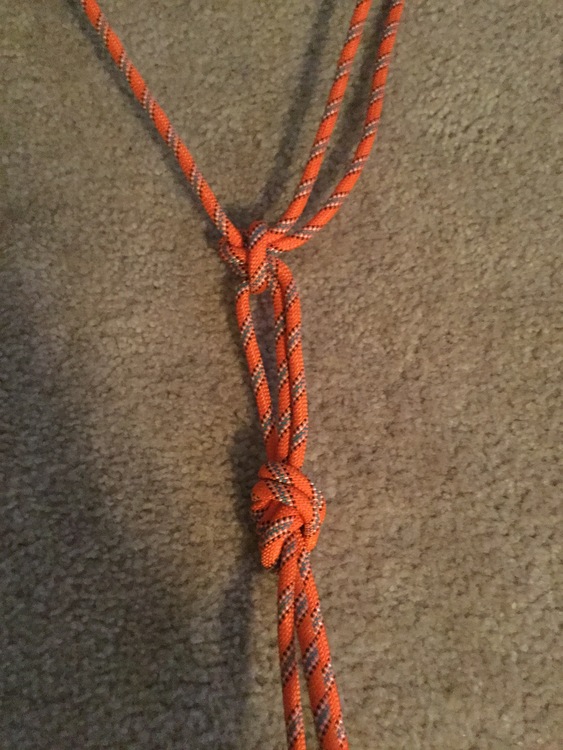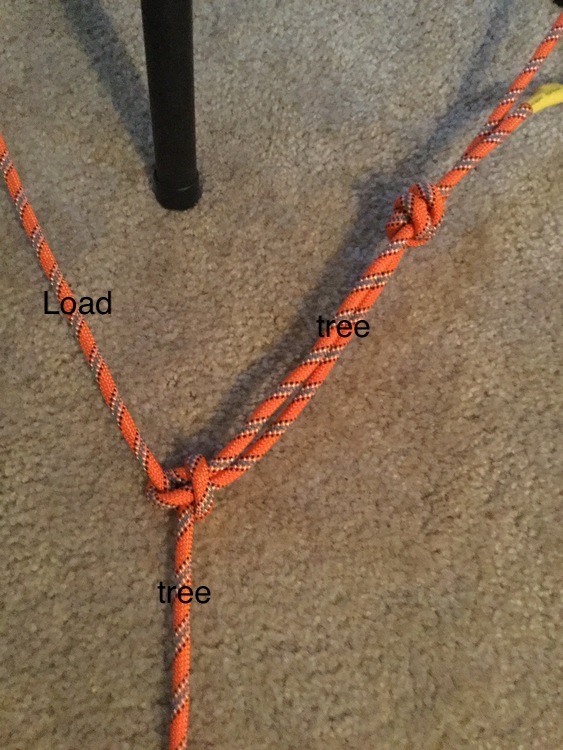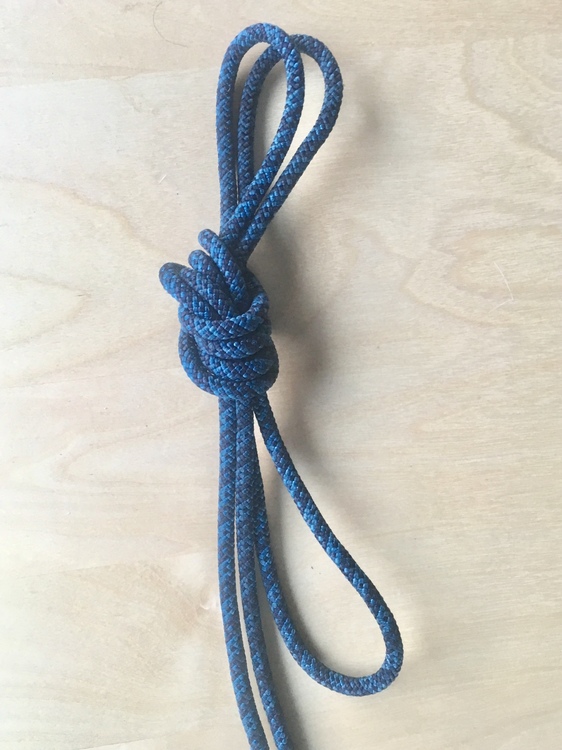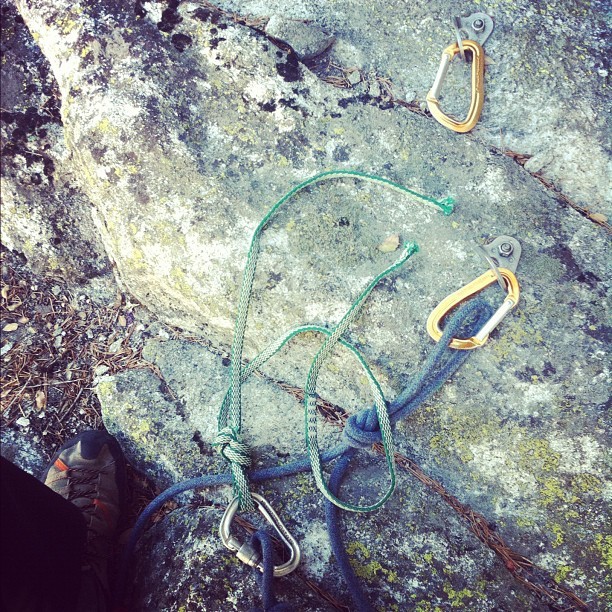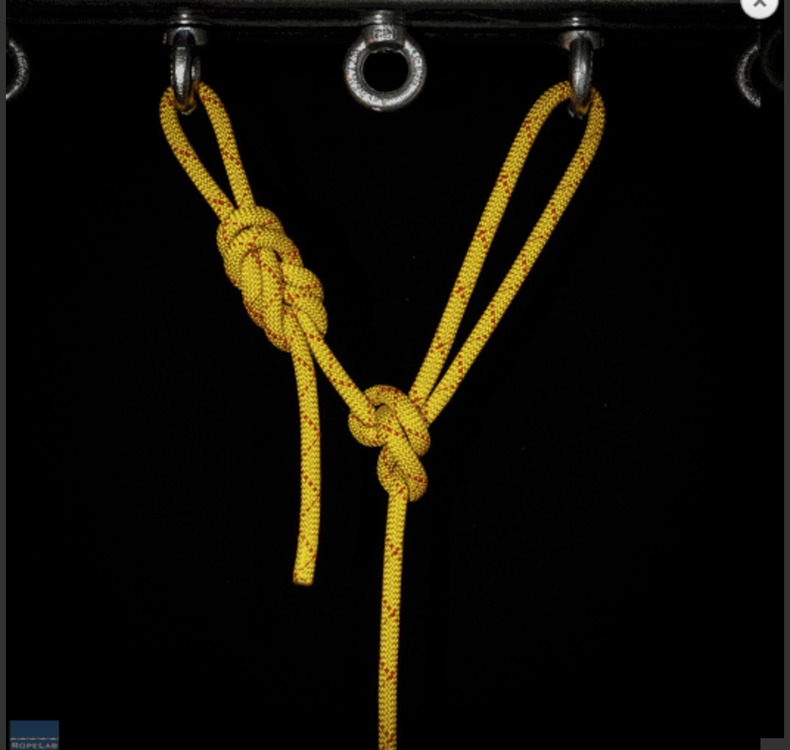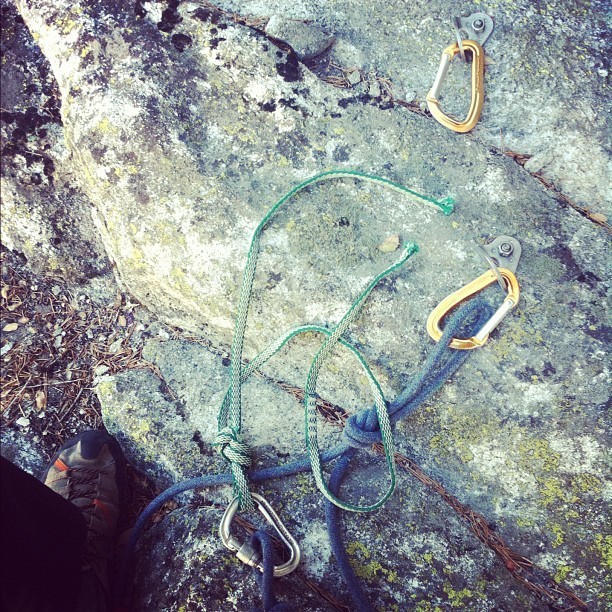Another “Check My Anchor” Post
|
|
I’ve taken an anchor building class at my local gym, so I have an idea of what I’m doing. I just wanted to make sure I’m not going to wreck my shit. Tree #1 Bowline knot w/ double fisherman’s Hanging over the edge of the cliff. Two figure eights on a bight. Two equal and opposed carabiners. Tree #2 Made a loop in the rope and made another bowline and double fishermans Am I doing anything wrong here? Thanks! |
|
|
I don't mean to "wreck your shit" but those look like some "loose stools" |
|
|
Give the guy a break! I think we can assume that he'd anchor to larger stools at the cliff. |
|
|
I use trees too. I learned to knot the trees the same way. My only difference is that I use a bowline on a bight for the knot holding the carabiners. https://www.animatedknots.com/bowlinebight/index.php |
|
|
Your bowlines aren't tied correctly. You have the load strand going around the tree and so the bowlines aren't being pulled in the correct orientation. I annotated your photo showing the corrected orientation. |
|
|
Thanks guys! Don’t worry I’m not bringing those stools to the crag. They would never fit in my day pack. Obviously going to stick to the fold up camping stools. |
|
|
To be honest, this seems more complicated than it needs to be. I’ve never been a huge fan of the two figure 8s approach, as you can just build your master point with one bomber knot like a BFK. Also, I like to have one arm of the anchor adjustable, which can be done with a clove hitch, although this usually requires a separate sling and biner. That way, you can get the masterpoint where you want it and then equalize it. That said, your approach does use less materials, as it appears to handle everything with just a single line of static, but IMO ease/speed of setup is more important. I’d rather carry a few more slings if it means less fiddling around at the cliff. |
|
|
Ted Pinson wrote: To be honest, this seems more complicated than it needs to be. I’ve never been a huge fan of the two figure 8s approach, as you can just build your master point with one bomber knot like a BFK. Also, I like to have one arm of the anchor adjustable, which can be done with a clove hitch, although this usually requires a separate sling and biner. That way, you can get the masterpoint where you want it and then equalize it. That said, your approach does use less materials, as it appears to handle everything with just a single line of static, but IMO ease/speed of setup is more important. I’d rather carry a few more slings if it means less fiddling around at the cliff. With the figure eight situation the better approach would just be to do a double headed figure eight instead of a big honking knot. Less stuff to deal with and is still redundant without a shock loading situation. Easier to untie too. |
|
|
Mikey Schaefer wrote: Your bowlines aren't tied correctly. You have the load strand going around the tree and so the bowlines aren't being pulled in the correct orientation. I annotated your photo showing the corrected orientation.I think I see what I am doing wrong. Is this set up correct? The load line is on the bottom of the pic. |
|
|
Chris Urtz wrote: I’ve taken an anchor building class at my local gym ...yer gonna die |
|
|
jg fox wrote: The double headed figure eight isn't actually redundant. If the loop that is passed over the bight (see pic) is cut both heads of the figure eight fail. Or if even one of the loops is cut the other loop isn't a knot anymore and would probably fail at a fairly low load. Given that this knot is going to be at an unmanned position and is going to be subject to possible abbraision I generally recommend against it. When I use to work for the Yosemite Mountaineering School as a guide we would often use two figure eight knots and use a setup that is almost exactly like the OP's (minus the incorrect bowline..) And yes Chris, that bowline is now tied correctly. Just add your double fishermans knot. |
|
|
Mikey Schaefer wrote: Interesting. I didn't think of it that way. Is the BHK the same or with enough "heads" does it maintain redundancy? |
|
|
Mikey Schaefer wrote: |
|
|
Ya, I don't think most people realize the double loop figure eight isn't redundant. I generally stay away from that knot and replace it with a redundant setup |
|
|
Nicholas Wilson wrote: That is pretty interesting Nicholas! Thanks for posting that. I'd really like to see the full report but it is behind a paywall on the ropelab website. I checked out the little info that was available on the website and he is very specific about the way it is dressed and mentions it in the video. He says "inside loaded strand". I'd be curious how it held up if it wasn't dressed the same. And I think I am just paranoid at this point in my career as i've seen enough ropes cut and anchors fail to make anyone paranoid... the pic below is of double length runner tied with fixed equalization that failed at an anchor I had fixed for a couple weeks. I'm pretty sure all of the testing would show that this sling shouldn't of failed yet it did in a real world situation. If I didn't have the rope actually clipped directly into the bolt someone may of died. This is one of the reasons I actually use two different knots if I want redundancy, not a single knot with two loops. |
|
|
Lots of good info above. Tie your bowline correctly and it's a good anchor as is. Using a BHK will work much better than 2 figure eights because it's quicker to tie, and while you're tieing it you can adjust where the masterpoint sits.
|
|
|
Mikey Schaefer wrote: It's super easy to prove to yourself that the "bunny ears Figure 8" doesn't fail when one loop is disconnected. No special dressing of the knot is needed. Just tie the knot and pull one loop. Bingo, it holds. Every time. Odds of cutting the golden strand that runs behind the knot are negligible IMO, but you may continue to avoid it; I work with many folks who feel likewise. As for the anchor failure you present, do you have any slight feeling that leaving it in place 'for a couple weeks" may have been a contributing factor? Again, you may continue to do whatever you're comfortable with. I wouldn't even consider something left out in the field for anything beyond bodyweight use e.g. a rap anchor. ALSO - from the photo, it is apparent that the sling was not used in a proper manner (clipped to both bolts, isolating F8 loop at the bottom). If it were, then breakage of one loop would leave it still clipped to the other bolt biner (which it's not). The only explanation I can come up with for a single point of breakage resulting in the sling becoming totally out of the system, as shown, is that it was in a Death Triangle setup. |
|
|
Mikey Schaefer wrote: Ya, I don't think most people realize the double loop figure eight isn't redundant. I generally stay away from that knot and replace it with a redundant setup BHK is BFK but safe to google and type on my work computer. So do the extra wraps of the knot itself make it stronger in comparison to the double? Not questioning your credentials but when did you pick up on the short comings of the double figure eight? |
|
|
Gunkiemike wrote: I wouldn't even consider something left out in the field for anything beyond bodyweight use e.g. a rap anchor. ALSO - from the photo, it is apparent that the sling was not used in a proper manner (clipped to both bolts, isolating F8 loop at the bottom). If it were, then breakage of one loop would leave it still clipped to the other bolt biner (which it's not). The only explanation I can come up with for a single point of breakage resulting in the sling becoming totally out of the system, as shown, is that it was in a Death Triangle setup. If I could get all of my projects finished in less than a day that would be ideal! But not realistic for the climbing I do or for anyone that does first ascents of large routes. Here is the route where this happened. https://www.mountainproject.com/route/109275454/father-time I've completely stopped using slings at anchors on big projects, I just use the rope instead but with an alpine butterfly and overhand on bight or a figure 8 (see below for example). I know the likelihood that the "golden strand" of a double loop 8 will cut is negligible for some people but in my use case I don't believe it is negligible. And what actually isn't apparent in that photo is how the anchor was actually tied. The pic below is how it was tied, which is a very standard and proper manner as far as I know (happy to be shown otherwise). So your assumption is incorrect. Both loops of the sling failed. You can't see the other two failure points because they are buried in the knot. I unfortunately only have a low resolution photo remaining and the sling ended up at BD for testing so I never saw it again. |
|
|
What did BD say? |
|
|
And this my friends, is why you never rely on one sling, ever. If you introduce simple redundancy in every connection that is practical to do so, you will live longer. |

 Continue with onX Maps
Continue with onX Maps Continue with Facebook
Continue with Facebook


















